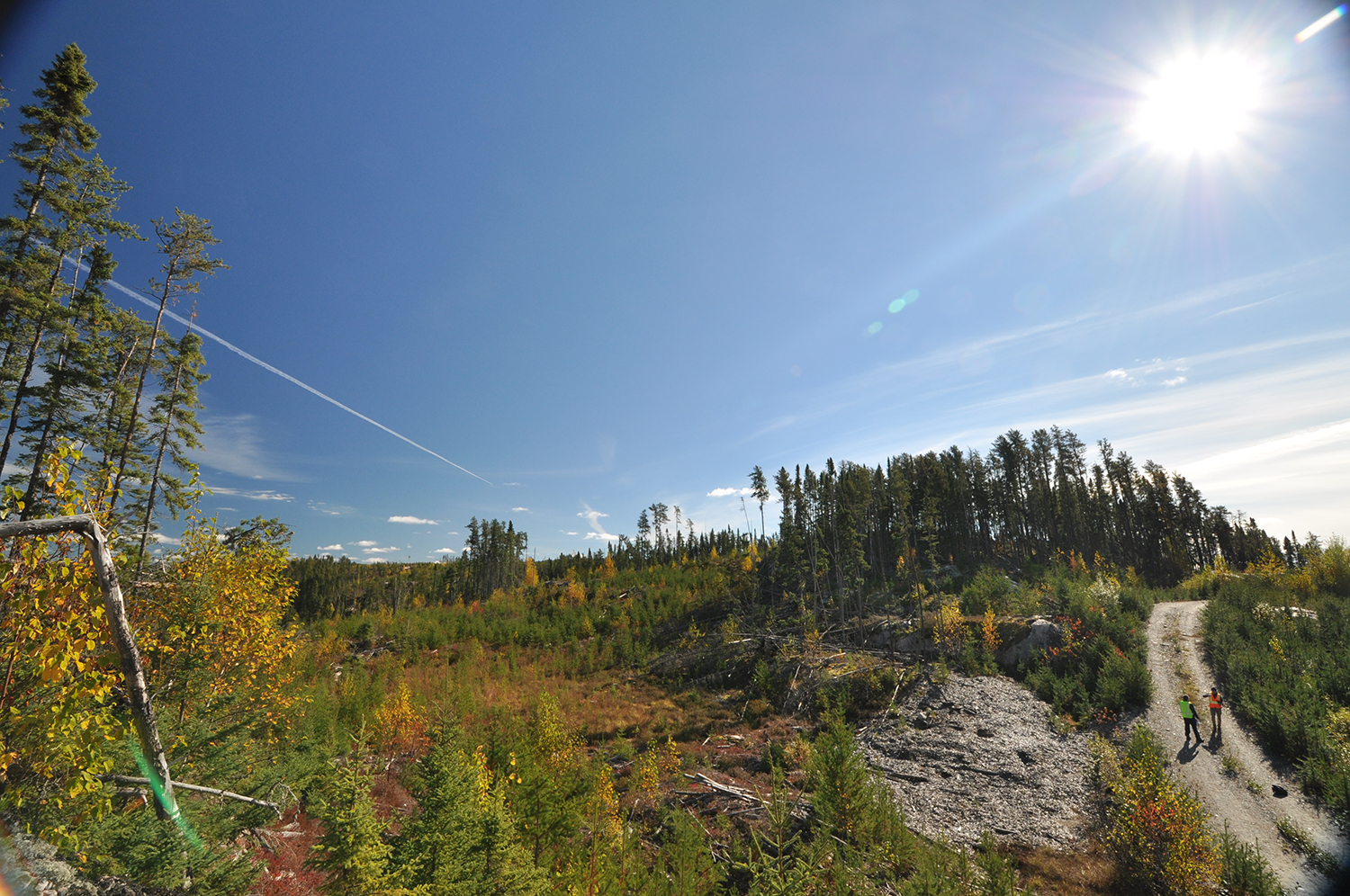To mitigate and minimize the impact of climate change on a future deep geological repository for used nuclear fuel, the Nuclear Waste Management Organization (NWMO) worked with Golder Associates Ltd. to study possible scenarios in the Ignace, Ontario study area. Similar research is underway in South Bruce, Ontario – the other potential location for a repository.
The study found precipitation is likely to increase in the future, and provided recommendations to ensure that any repository built in the Ignace area would be built with increased precipitation in mind.
“This is the first time this modelling work has been done for a potential repository location and any assessment of sites for the safe storage of used nuclear fuels must take into account the potential future impact of climate change on its infrastructure,” said Kelly Liberda, Senior Engineer, Preclosure Safety. “While it’s difficult to project the extent to which precipitation could fluctuate in specific geographic areas, the NMWO is taking steps to anticipate the most likely scenarios.”
Increased precipitation can impact the watershed in a given area, resulting in flooding or other extreme climate events. Previous industry studies have looked at the potential impact of present-day precipitation levels on repository operations, but the Golder Associates study was undertaken to consider long-term impacts based on future precipitation levels due to climate change.
“The time horizon for the storage of used nuclear fuel is very long, which means we must take into account how the evolution of climate change could impact our operational environment over that period,” said Ms. Liberda. “A fundamental tenet of NWMO’s mission is to incorporate new knowledge and adapt plans in response to changing conditions.”
The study considered projected changes in climate over three separate time periods – mid-century (2041 to 2070); end-of-century (2071-2100); and beyond 2100. These periods coincide with the different phases for a possible deep geological repository, including site preparation and construction; the operational period; extended post-closure monitoring; and decommissioning.
Based on a multi-model assessment of publicly available data, the Golder Associates study found that both one-day probable maximum precipitation and one-day rainfall events in the Ignace study area are projected to increase in the 2050s and 2080s. Indicating the future “is likely to be wetter,” the study offered recommendations for how their findings could be best leveraged in future planning.
“Scientific assessments like these provide invaluable information which helps inform the NWMO’s design plans,” added Ms. Liberda. “The NWMO is committed to continuous efforts to identify external forces that could impact our operations, as well as further mitigate and minimize any risks posed by environmental factors such as climate change.”
The Township of Ignace in northwestern Ontario is one of two potential hosts in the site selection process for a repository and associated facilities. Technical site evaluations and social studies are also continuing in the southern Ontario Municipality of South Bruce. The NWMO expects to identify a single, preferred site for the project, in an area with informed and willing hosts, by 2023.

